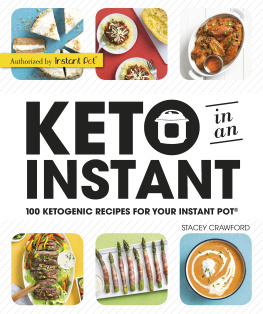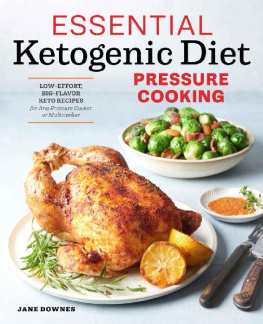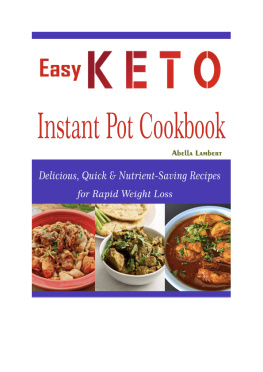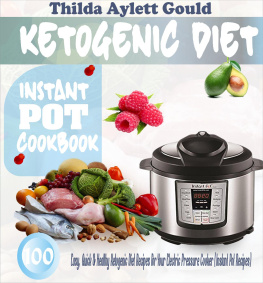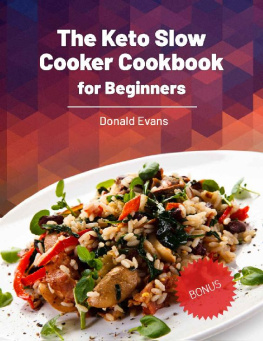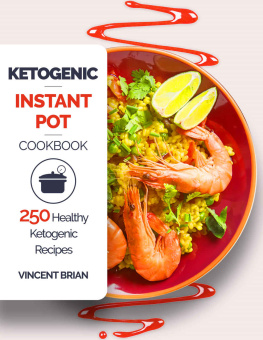I would like to thank the DK Publishing team for choosing me to work on this project. They made this challenging learning experience a pleasant one.
A special thanks to the editor, Brook Farling, who patiently guided and helped me through the whole process and organized everything. He is an absolute joy to work with.
To my mom, Sandra, and dad, Neil, for encouraging me in all my endeavors.
To my Aunt Kathy, who is my favorite author and role model. You have been a positive and caring influence in my life.
To Jennifer Eloff for teaching, mentoring, and inspiring me during my low-carb journey. You always advised me, believed in me, and encouraged me from the very beginning.
To my husband Don, who is my rock, a pillar of support, and my biggest cheerleader in all things for over 30 years. Your endless love and support have enabled me to accomplish more than I ever thought possible.
And to my kids, Danielle, Raul, and Hunter for encouraging me, believing in me, and taste testing all my recipes and food experiments.
INTRODUCTION
When I first discovered the ketogenic diet, I thought it would be just another fad diet or temporary weight loss solution. I had tried so many different diets in the past (at the time I was over 40), yet none of the diets I tried seemed to give me results. I was utterly frustrated with being hungry, counting calories, and exercising to the point of exhaustion or injury. As a last resort, I decided to try the ketogenic low-carb diet, merely because it was the only one I hadnt tried yet. Thinking that the diet would inevitably fail, I was astonished that I lost weight, saw clearer skin, and gained extra energy while enjoying delicious foods without any hunger. Im in my fifties now and could not be happier with the ketogenic lifestyle, as I feel even better than I did in my twenties. I genuinely feel like Ive found the fountain of youth.
Discovering the Instant Pot, a popular and multifunctional appliance, was a game changer for me. The Instant Pot makes cooking healthy ketogenic meals easier and faster, and with fewer dishes to wash. The keto diet, with the help of the Instant Pot, is a winning combination that makes eating healthy a breeze.
This book will give you the basics on how to start a ketogenic diet, count your net carbs, and use your Instant Pot, and it includes 100 healthy, flavorful, ketogenic recipes to prepare in the Instant Pot. I want this to be a resource and tool for you so that you will have everything you need to start a ketogenic lifestyle with your Instant Pot.
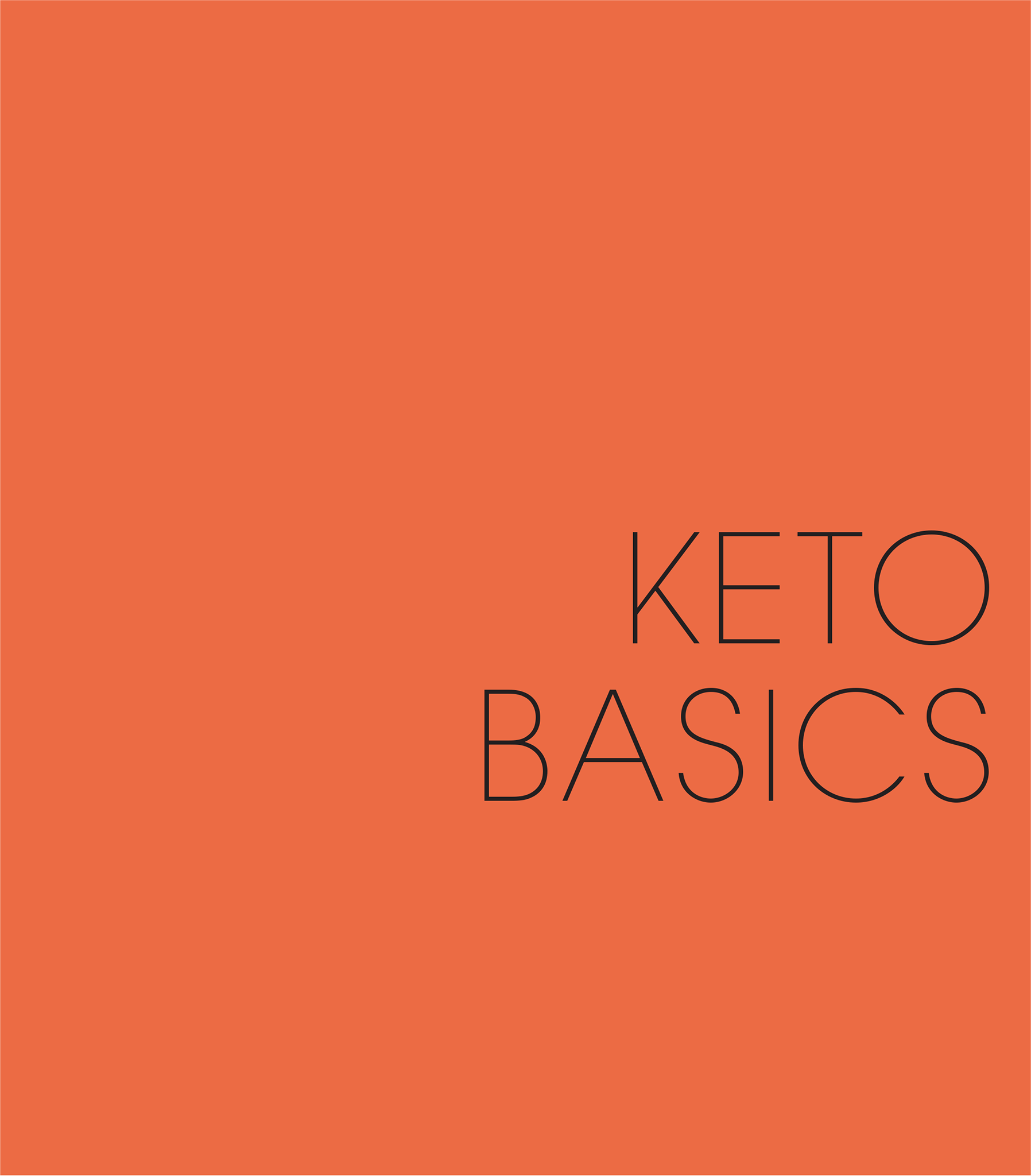
WHAT IS THE KETOGENIC DIET?
The ketogenic diet is a high-fat, moderate-protein, low-carbohydrate diet that can produce significant health benefits for both the mind and body. Keto is not a new concept, but recently its been embraced as a better way to burn fat, lose weight, and improve health. But what is it, and how did it come about?
ORIGINS OF THE KETO DIET
Physicians first introduced the ketogenic diet in the early twentieth century as a treatment for managing seizure symptoms in epilepsy patients. Prior to the discovery of the keto diet, physicians commonly prescribed fasting as a treatment for reducing seizures. And while fasting produced some positive results, it simply was not a sustainable way to eat. It was later discovered that patients who ate a high-fat, low-carbohydrate diet often experienced the same metabolic effects that fasting had produced, but without the need for prolonged fasting. Recent scientific studies on the impact of the ketogenic diet show significant health benefits including improved brain function, decreased insulin resistance, lower blood sugar levels, weight loss, and more. Eating high levels of dietary fat was once considered taboo, but science is proving it to be a smarter and more sustainable way to fuel your body and improve your health.
KETOSIS AND MACRONUTRIENTS
The key to success on the ketogenic diet is consuming the right types of foods in the proper ratios to force your body into a metabolic state called ketosis. Ketosis occurs when the body is so starved of the sugars it typically utilizes for fuelsugars that normally come from sugar and carbohydratesthat its instead forced to burn existing body fat to produce fuel. A by-product of this process are ketones, which are the organic compunds the body uses for fuel in place of glucose. Ketones are produced by the liver through ketosis and are measurable in the body when a state of ketosis is achieved.
The key to attaining ketosis is consuming the right balance of macronutrients. These core macrosprotein, fat, and carbohydratesare all found in the foods we eat and are the benchmarks for measuring the nutritional breakdown of a diet. A typical western diet has about 25 to 35 percent of calories coming from fat, 15 to 25 percent from protein, and 50 to 60 percent from carbohydrates. The ketogenic diet, however, generally has around 70 to 75 percent of calories coming from fat, 15 to 20 percent from protein, and only about 5 to 10 percent from carbohydrates. Most keto dieters follow this general macro ratio, although there are some variationsathletes, for instance, may consume more carbs for fuel and to aid in recovery.
CARBS AND NET CARBS
Carbohydrates are compounds that are present in most of the foods we eat and theyre what the body uses to produce glucose, which in turn is what it uses for fuel. There are different types of carbs, including simple carbohydrates and complex carbohydrates. Simple carbs are comprised of simple sugars or starches and are what the body converts into glucose, which it then uses as energy or stores away as fat. Complex carbs are more difficult for the body to digest and thus dont create the spikes in blood sugar that simple carbs produce, so theyre a much less efficient source of energy for the body. While simple carbs are converted into energy quickly, they raise blood sugar levels and can be converted into fat. Complex carbs, and fiber, generally do not raise blood sugar levels, are less digestible, and are not converted into fat. (Fiber is also a form of carbohydrate, but unlike simple carbs, fiber is not digestible, so its not usable as a source of energy and instead is just passed through the body.)

